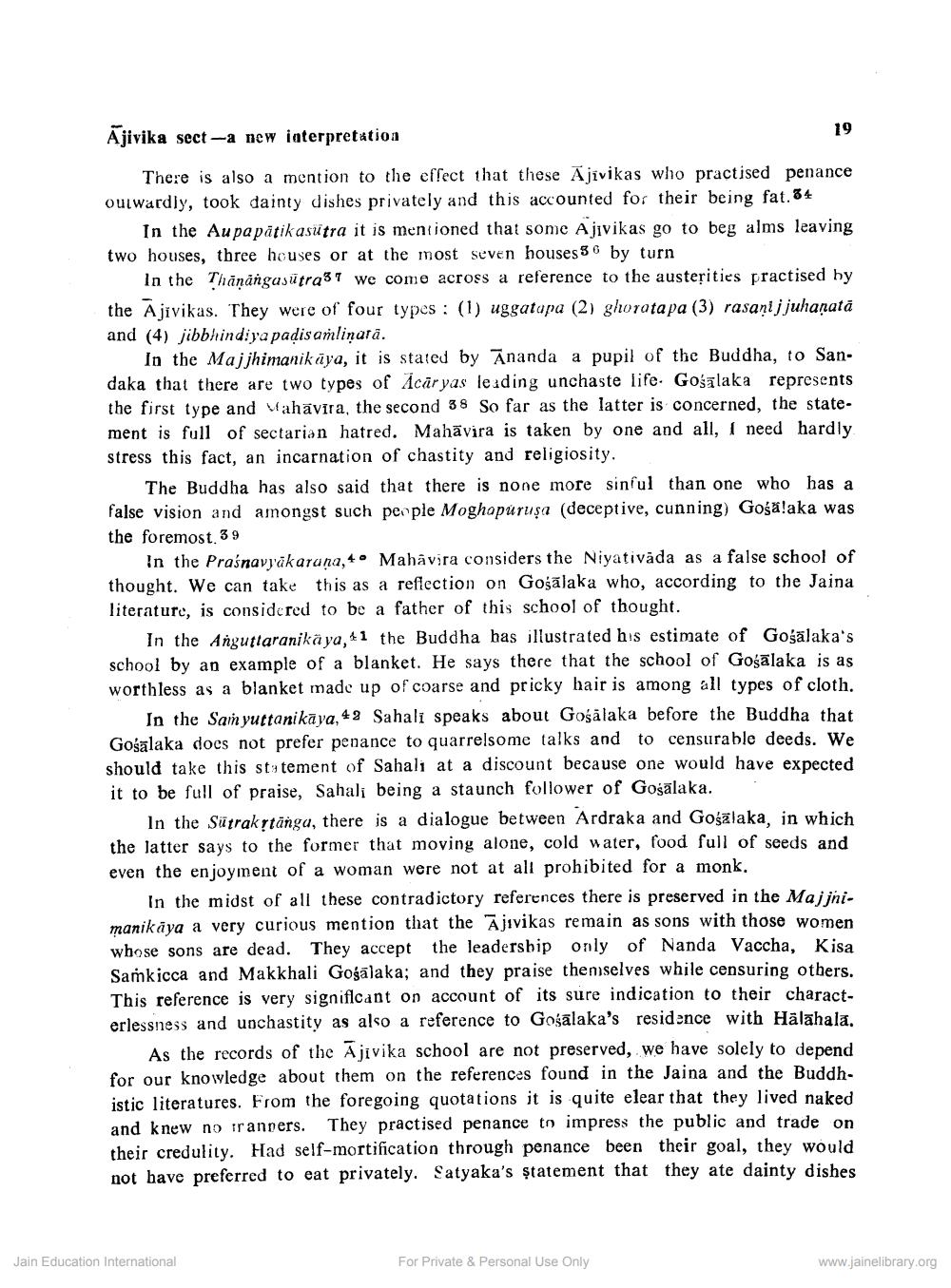________________
Ajivika sect -a new interpretation
There is also a mention to the effect that these Ajivikas who practised penance outwardly, took dainty dishes privately and this accounted for their being fat. 34
19
In the Aupapatikasutra it is mentioned that some Ajivikas go to beg alms leaving two houses, three houses or at the most seven houses by turn
In the Thanahgastras we come across a reference to the austerities practised by the Ajivikas. They were of four types: (1) uggatopa (2) ghorotapa (3) rasanijjuhaṇată and (4) jibbhindiya padisomlinara.
In the Majjhimanikaya, it is stated by Ananda a pupil of the Buddha, to Sandaka that there are two types of Acaryas leading unchaste life. Gośalaka represents the first type and Mahavira, the second 38 So far as the latter is concerned, the statement is full of sectarian hatred. Mahavira is taken by one and all, I need hardly stress this fact, an incarnation of chastity and religiosity.
The Buddha has also said that there is none more sinful than one who has a false vision and amongst such people Moghopurua (deceptive, cunning) Go!aka was the foremost. 39
In the Praśnavyakaraṇa, Mahavira considers the Niyativada as a false school of thought. We can take this as a reflection on Gojalaka who, according to the Jaina literature, is considered to be a father of this school of thought.
In the Aguttaranikaya, 1 the Buddha has illustrated his estimate of Gojalaka's school by an example of a blanket. He says there that the school of Gogalaka is as worthless as a blanket made up of coarse and pricky hair is among all types of cloth.
In the Samyuttanikaya, 42 Sahalı speaks about Gojalaka before the Buddha that Gośalaka does not prefer penance to quarrelsome talks and to censurable deeds. We should take this statement of Sahali at a discount because one would have expected it to be full of praise, Sahal, being a staunch follower of Goalaka.
In the Satrakṛtonga, there is a dialogue between Ardraka and Gojalaka, in which the latter says to the former that moving alone, cold water, food full of seeds and even the enjoyment of a woman were not at all prohibited for a monk.
In the midst of all these contradictory references there is preserved in the Majjnimanikaya a very curious mention that the Ajivikas remain as sons with those women whose sons are dead. They accept the leadership only of Nanda Vaccha, Kisa Samkicca and Makkhali Gogalaka; and they praise themselves while censuring others. This reference is very significant on account of its sure indication to their characterlessness and unchastity as also a reference to Gosalaka's residence with Hälahala.
As the records of the Ajivika school are not preserved, we have solely to depend for our knowledge about them on the references found in the Jaina and the Buddhistic literatures. From the foregoing quotations it is quite clear that they lived naked and knew no ranners. They practised penance to impress the public and trade on their credulity. Had self-mortification through penance been their goal, they would not have preferred to eat privately. Satyaka's statement that they ate dainty dishes.
Jain Education International
For Private & Personal Use Only
www.jainelibrary.org




